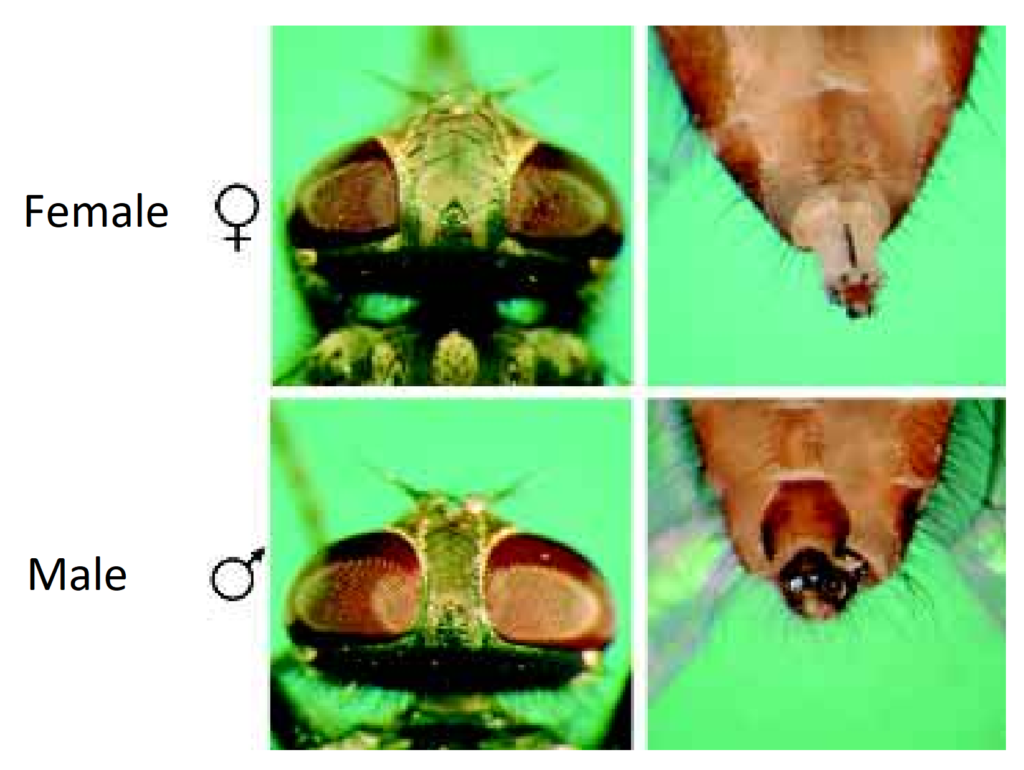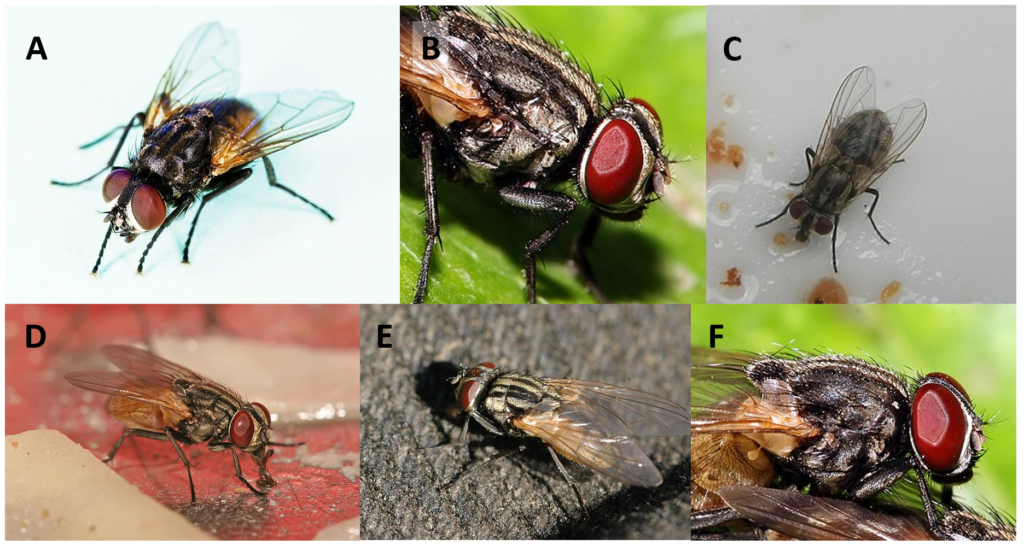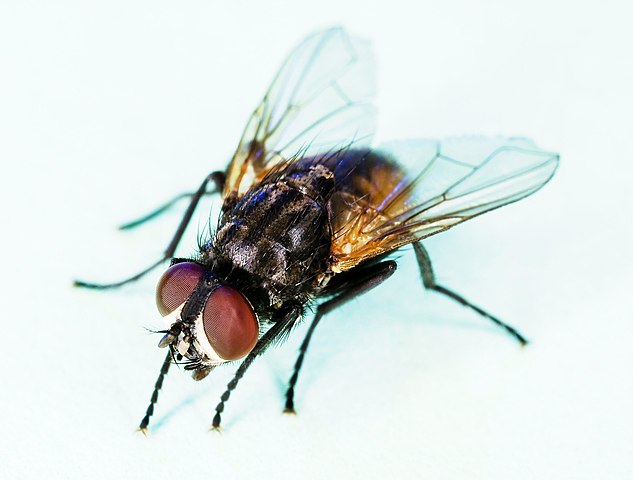A woman walked into the kitchen to find her husband stalking around with a fly swatter.
“What are you doing?” she asked.
“Hunting flies,” he responded.
“Oh. Killing any?” she asked.
“Yep, three males, two females,” he replied.
Intrigued, she asked, “How can you tell?”
“Three were on a beer can, two were on the phone.”
You could amuse your friends and family by telling this joke – or you could amaze them by actually correctly determining the sex of any present houseflies. Read on if you want to learn this “party trick”.
During my PhD study I examined thousands of flies, and counted males and females (I worked on sex determination), so I know what I’m talking about. In the lab, conditions made it an easy job – I could sedate the flies with CO2 and could even use a small microscope to have a better look. But no microscope is necessary if you can get close enough to a fly (or have good eyesight). And if you don’t swat too hard you should be able to distinguish the sex of the corpse. However, I challenge you to determine a fly’s sex when it’s still walking on your table, window or sleeve. It is possible!
Now the most important part – what to look for: you can look a fly between the eyes and/or at the bottom part of its abdomen (the rear part of the body; see the picture below).

The female housefly’s eyes are set further apart than males. Their abdomen is rounder, but pointy at the end and very lightly-coloured when seen from below (lighter that seems on the picture above). On the picture the female’s ovipositor is shown, but it’s usually hidden when she is not laying eggs.
The male’s abdomen is in general slender and has a blunt end. When viewed from below it has a clearly visible dark spot at the end.
And now a small “dry” test before you start your own observations in “the wild”:

The text above concerns the housefly (Musca domestica) – common, blackish fly approximately 7 mm long. I don’t know how to distinguish males from females for all flies (there are 125000 species described), but the eye-distance rule does also apply also to several other flies (e.g. horseflies), and the genitals of many flies look similar. So, using what you learned above for other flies is a good first guess.
Photos: USDAgov – https://www.flickr.com/photos/usdagov/8674435033/sizes/o/in/photostream/, Public Domain, https://commons.wikimedia.org/w/index.php?curid=25727555; Sanjay Acharya – Own work, CC BY-SA 4.0, https://commons.wikimedia.org/w/index.php?curid=64658576; Judgefloro – Own work, CC0, https://commons.wikimedia.org/w/index.php?curid=64830885; Muhammad Mahdi Karim – Eigen werk, GFDL 1.2, https://commons.wikimedia.org/w/index.php?curid=7672794; James Lindsey at Ecology of Commanster, CC BY-SA 3.0, https://commons.wikimedia.org/w/index.php?curid=1970083; Muhammad Mahdi Karim – Own work, GFDL 1.2, https://commons.wikimedia.org/w/index.php?curid=62760319


Solutions to the quiz: Tip: look mainly between the eyes (it was difficult to find a good photo of fly’s abdomen). A – male; B-E – females; F – male. Photo C shows nicely the shape of female’s abdomen.